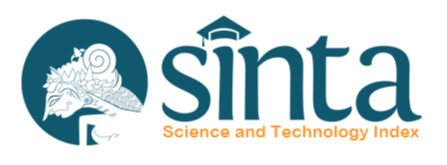Nutritional Status of Children Under Five Years in the Work Area of Puskesmas Cipadung
DOI:
https://doi.org/10.12928/dpphj.v15i2.4748Keywords:
Nutritional status, Children under five years, MalnutritionAbstract
Background: Children under five years are in the golden growth and development period; however, an excellent nutritional status must support optimal growth and development. The nutritional status of children under five years needs special attention. An overview of the nutritional status of children in a region is the first step to determine the factors that affect the nutritional status of children under five in that region. Method: This was a descriptive study with a cross-sectional design. Results: The results showed that children under five aged 0 – 23 months were 35.47%, while those aged 24-59 months were 64.53%, boys were 52.95%, and girls were 47.05%. Children under five years with inferior nutritional status (index weight/age) of 2.63%, children with nutritional status of stunting (index for height/age) of 12.57%. Children with a malnutrition status (index weight/height) of 2.41%. Conclusion: The problem of stunting and wasting nutrition is still found in the work area Puskesmas Cipadung. These problems can arise due to poor parenting and lack of nutritious food intake due to parents' low education and income level.
References
2. Merita M, Sari MT, Hesty H. The Positive Deviance of Feeding Practices and Carring With Nutritional Status of Toddler Among Poor Families. J Kesehat Masy. 2017;13[1]:106–12. DOI: https://doi.org/10.15294/kemas.v13i1.7919
3. Kalu RE, Etim KD. Factors Associated with Malnutrition Among Underfive Children in Developing Countries: A Review. Glob J Pure Appl Sci. 2018;24[1]:69. DOI: https://doi.org/10.4314/gjpas.v24i1.8
4. Marniati, Putri ES, Sriwahyuni S, Khairunnas, Duana M. Knowledge Study , Income Level and Socio-Culture of the Nutritional Status of Toddler. J Nutr Sci. 2020;1[2]:38–44. DOI: https://doi.org/10.35308/jns.v1i2.2770
5. Akombi BJ, Agho KE, Merom D, Hall JJ, Renzaho AM. Multilevel Analysis of Factors Associated with Wasting and Underweight Among Children Under-Five Years in Nigeria. Nutrients. 2017;9[1]. DOI: https://doi.org/10.3390/nu9010044
6. Chien, T. Y., Chien, Y. W., Chang, J. S., & Chen, Y. C. (2018). Influence of Mothers' Nutrition Knowledge and Attitudes on Their Purchase Intention for Infant Cereal with No Added Sugar Claim. Nutrients, 10(4), 435. https://doi.org/10.3390/nu10040435
7. Kusrini I, Laksono AD. Regional Disparities of Stunted Toddler in Indonesia. Indian J Forensic Med Toxicol. 2020;14[3]:1916–20. DOI: https://doi.org/10.31227/osf.io/6zqdc
8. Alhamid SA, Carolin BT, Lubis R. Studi Mengenai Status Gizi Balita. J Kebidanan Malahayati. 2021;7[1]:131–8. DOI: https://doi.org/10.33024/jkm.v7i1.3068
9. Lumeng, J. C., Kaciroti, N., Retzloff, L., Rosenblum, K., & Miller, A. L. (2017). Longitudinal Associations Between Maternal Feeding and Overweight in Low-Income Toddlers. Appetite, 113, 23–29. https://doi.org/10.1016/j.appet.2017.02.016
10. Syihab SF, Stephani MR, Kumalasari I, Suherman A. Socioeconomic Status in Relation to Stunting and Motor Skill Develpoment of Toddlers in Urban and Rural Areas. J Kesehat Masy. 2021;16[3]:340–7. DOI: https://doi.org/10.15294/kemas.v16i3.24382
11. Sudiyah, Rosida L. The Characteristics of Undernutrition in Toddlers. Advannces Heal Sci Res. 2021;34:212–5. DOI: https://doi.org/10.2991/ahsr.k.210127.047
12. Handayani R. Factors Related to Nutritional Status in Children Under Five. J Endur. 2017;2[2]:217–24. DOI: https://doi.org/10.3889/oamjms.2020.3666
13. Kitzinger, J., & Kitzinger, C. (2018). Deaths After Feeding-Tube Withdrawal From Patients in Vegetative and Minimally Conscious States: A Qualitative Study of Family Experience. Palliative medicine, 32(7), 1180–1188. https://doi.org/10.1177/0269216318766430
14. Kwami, C. S., Godfrey, S., Gavilan, H., Lakhanpaul, M., & Parikh, P. (2019). Water, Sanitation, and Hygiene: Linkages with Stunting in Rural Ethiopia. International journal of environmental research and public health, 16(20), 3793. https://doi.org/10.3390/ijerph16203793
15. Muliyana, Nuraeni, Suriana, Ahmad, M., Syarif, S., As'ad, S., Arifuddin, S., & Usman, A. N. (2020). Midwives' Perceptions About the Ease of Sisfor_Bidanku Application For Toddler Anthropometric-Based Growth and Development. Enfermeria clinica, 30 Suppl 4, 539–543. https://doi.org/10.1016/j.enfcli.2019.10.134
16. Rakotomanana, H., Gates, G. E., Hildebrand, D., & Stoecker, B. J. (2017). Determinants of Stunting in Children Under 5 years in Madagascar. Maternal & child nutrition, 13(4), e12409. https://doi.org/10.1111/mcn.12409
17. Wali, N., Agho, K. E., & Renzaho, A. (2020). Factors Associated with Stunting among Children under 5 Years in Five South Asian Countries (2014-2018): Analysis of Demographic Health Surveys. Nutrients, 12(12), 3875. https://doi.org/10.3390/nu12123875
18. Dewi, N. U., & Mahmudiono, T. (2021). Effectiveness of Food Fortification in Improving Nutritional Status of Mothers and Children in Indonesia. International journal of environmental research and public health, 18(4), 2133. https://doi.org/10.3390/ijerph18042133
19. Dermyshi, E., Wang, Y., Yan, C., Hong, W., Qiu, G., Gong, X., & Zhang, T. (2017). The "Golden Age" of Probiotics: A Systematic Review and Meta-Analysis of Randomized and Observational Studies in Preterm Infants. Neonatology, 112(1), 9–23. https://doi.org/10.1159/000454668
20. Yang, L., Li, M., Liu, X., Wu, M., Zhang, J., Zhao, L., Ding, G., & Yang, X. (2020). Evaluation of Iodine Nutritional Status Among Pregnant Women in China. Thyroid : official journal of the American Thyroid Association, 30(3), 443–450. https://doi.org/10.1089/thy.2019.0001
21. Angeles-Agdeppa, I., Monville-Oro, E., Gonsalves, J. F., & Capanzana, M. V. (2019). Integrated School Based Nutrition Programme Improved the Knowledge of Mother and Schoolchildren. Maternal & child nutrition, 15 Suppl 3(Suppl 3), e12794. https://doi.org/10.1111/mcn.12794
22. Khatun W, Rasheed S, Alam A, Huda TM, Dibley MJ. Assessing the Intergenerational Linkage Between Short Maternal Stature and Under-Five Stunting and Wasting in Bangladesh. Nutrients. 2019;11[8]:1–15. DOI: https://doi.org/10.3390/nu11081818
23. Hutchens, A., & Lee, R. E. (2018). Parenting Practices and Children's Physical Activity: An Integrative Review. The Journal of school nursing : the official publication of the National Association of School Nurses, 34(1), 68–85. https://doi.org/10.1177/1059840517714852
24. Katongole, C. B., & Yan, T. (2020). Effect of Varying Dietary Crude Protein Level on Feed Intake, Nutrient Digestibility, Milk Production, and Nitrogen Use Efficiency by Lactating Holstein-Friesian Cows. Animals : an open access journal from MDPI, 10(12), 2439. https://doi.org/10.3390/ani10122439
25. Patro-Gołąb, B., Zalewski, B. M., Kołodziej, M., Kouwenhoven, S., Poston, L., Godfrey, K. M., Koletzko, B., van Goudoever, J. B., & Szajewska, H. (2016). Nutritional Interventions or Exposures in Infants and Children Aged Up to 3 years and their Effects on Subsequent Risk of Overweight, Obesity and Body Fat: A Systematic Review of Systematic Reviews. Journal of the International Association for the Study of Obesity, 17(12), 1245–1257. https://doi.org/10.1111/obr.12476
26. Blondin, J. H., & LoGiudice, J. A. (2018). Pregnant Women's Knowledge and Awareness Of Nutrition. Applied nursing research : ANR, 39, 167–174. https://doi.org/10.1016/j.apnr.2017.11.020
27. Demir, G., Yardimcı, H., Özçelik, A. Ö., & Çakıroğlu, F. P. (2020). Compliance of Mothers' Breastfeeding and Complementary Feeding Practices with WHO Recommendations in Turkey. Nutrition Research and Practice, 14(6), 654–666. https://doi.org/10.4162/nrp.2020.14.6.654
28. Fadare, O., Amare, M., Mavrotas, G., Akerele, D., & Ogunniyi, A. (2019). Mother's Nutrition-Related Knowledge and Child Nutrition Outcomes: Empirical Evidence From Nigeria. PloS one, 14(2), e0212775. https://doi.org/10.1371/journal.pone.0212775
29. Suminar E, Wibowo AR. The Correlation Between Infection Diseases History and Nutritional Status in Toddler. Fundam Manag Nurs J. 2021;4[1]:18–22. DOI: https://doi.org/10.20473/fmnj.v4i1.21587
30. Sirkka, O., Hof, M. H., Vrijkotte, T., Abrahamse-Berkeveld, M., Halberstadt, J., Seidell, J. C., & Olthof, M. R. (2021). Feeding Patterns and BMI Trajectories During Infancy: A Multi-Ethnic, Prospective Birth Cohort. BMC pediatrics, 21(1), 34. https://doi.org/10.1186/s12887-020-02456-4
Downloads
Published
Issue
Section
License
Authors transfer the copyright and grant the Disease Prevention and Public Health Journal right of first publication with the work simultaneously licensed under a Creative Commons Attribution License (CC BY-SA 4.0) that allows others to share (copy and redistribute the material in any medium or format) and adapt (remix, transform, and build upon the material) the work for any purpose, even commercially with an acknowledgement of the work's authorship and initial publication in Disease Prevention and Public Health Journal. Authors are able to enter into separate, additional contractual arrangements for the non-exclusive distribution of the journal's published version of the work (e.g., post it to an institutional repository or publish it in a book), with an acknowledgement of its initial publication in Disease Prevention and Public Health Journal. Authors are permitted and encouraged to post their work online (e.g., in institutional repositories or on their website) prior to and during the submission process, as it can lead to productive exchanges, as well as earlier and greater citation of published work (See The Effect of Open Access).

This work is licensed under a Creative Commons Attribution-ShareAlike 4.0 International License.







